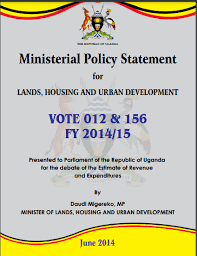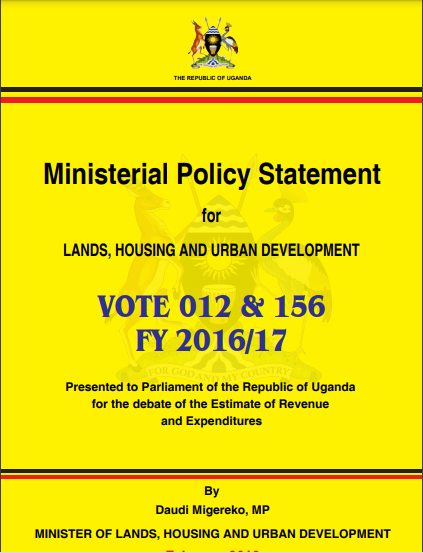Ministerial Policy Statement for LANDS, HOUSING AND URBAN DEVELOPMENT
Madam Speaker and Honorable Members, the vision of my Ministry is “Sustainable Land Use, Land Tenure Security, Affordable, Decent Housing and Organized Urban Development”. The Mission is “To ensure sustainable land management, planned urban and rural development and decent housing for all”. The Mandate is “To ensure rational and sustainable use, effective management of land and orderly development of urban and rural areas as well as safe, planned and adequate housing for socio-economic development”.





